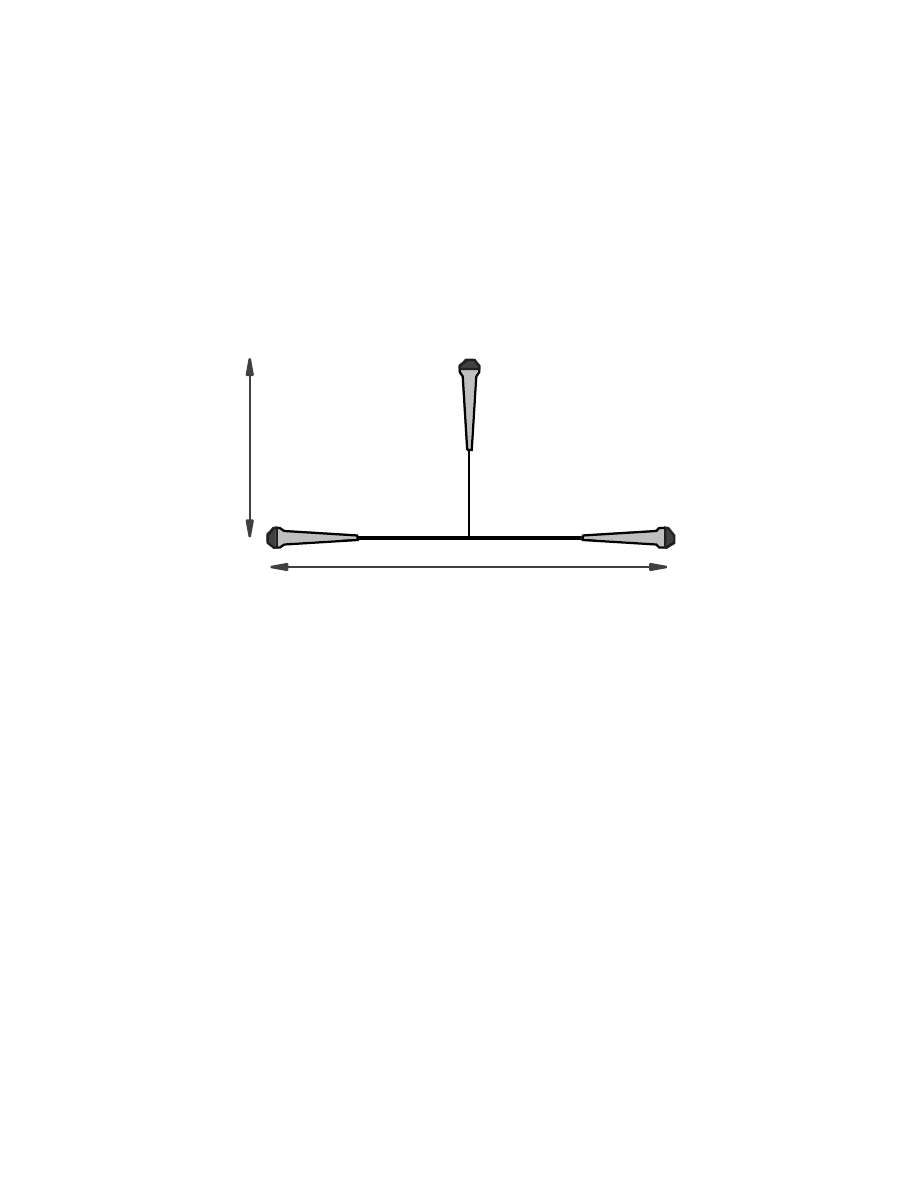ВУЗ: Казахская Национальная Академия Искусств им. Т. Жургенова
Категория: Учебное пособие
Дисциплина: Не указана
Добавлен: 03.02.2019
Просмотров: 12332
Скачиваний: 6

D
DASH: Digital Audio Stationary Head. A standard format for ensuring compatibility be-
tween Sony PCM-model digital multitrack recorders which use stationary, rather than rotat-
ing, heads. Originally, the DASH format was designed to support 2/8/16/24-track record-
ers using reel-to-reel tape. The 8-track and 16-track machines were never marketed, and a
1
4
” two-track model is no longer in production. The DASH specification now includes dou-
ble-density, thin-film heads that allow 48-track recording on the same
1
2
” tape originally
used by the 24-track devices. DASH-format machines are backward compatible: 24-track
machines can be used with newer models, and a project can be started on a 24-track machine
and completed on a 48-track recorder, if needed, as the data from tracks 25-48 are written
into the spacing between the original 24 tracks. DASH tapes run 30ips at up to 48kHz, with
44.1kHz and other sampling rates supported. In addition to 24-track or 48-track recording,
DASH format provides two analog cue tracks and one track each for control and timecode sig-
nals. DASH format recorders are currently manufactured by Sony and Studer. See also S-
DAT, ProDigi.
DAT: Digital Audio Tape. There are two formats: R-DAT which uses a rotating head as-
sembly similar to a VCR, records diagonally across the tape, and includes a four-channel
format which would permit recording of ambisonics; and the S-DAT which uses a stationary
head and records several linear, parallel tracks of digital signals. There are no known com-
mercial S-DAT products. The DAT standard format specifies a small cassette that provides
up to two hours of 16-bit, linear, sequential monaural, PCM digital recording at a sampling rate
of 32kHz, 44.1kHz, or 48kHz. Also called a DCAC, Digital Compact Audio Cassette. See
also Digital Compact Cassette.
data compression: See compression(3).
data controller: A controller change message which is used to set some parameter in the re-
ceiving device, for example, the data increment and decrement switches on a synthesizer.
data dump: A packet of memory contents being transmitted from a sending device to a re-
ceiving device, usually in the form of MIDI System-Exclusive data, or stored in RAM. Also
called a bulk dump or block transfer.
datafiler: A portable device for the replay of previously recorded MIDI data, used in live
performances.
data slider: A pot fitted to a device such as a synthesizer which allows parameters within
the device to be adjusted for programming, etc.
data thinning: A sequencer software feature which allows programs and/or devices to re-
duce the amount of MIDI data produced by continuous controllers such as pitch-bend, after-
touch, etc. This is accomplished by only keeping the continuous controller data when the pa-
rameter changes, as opposed to sending all bytes of data, all of the time.
DAW: Digital Audio Workstation. See workstation.
dB: See decibel.
DB-9 connector: An industry-standard connector for serial machine control of professional
audio and video transports. Developed by Sony, also called the Sony 9-pin.

D
DBS: Direct Broadcast Satellite. See AC-1.
dbx™: The dbx noise reduction system is a broadband compander system that is connected into
a recording system in the same way that a Dolby system is. It provides up to 30dB of noise
reduction, but unlike Dolby noise reduction, the dbx system works over the entire audio fre-
quency range, using a 2:1/1:2 compression/expansion ratio. Dolby-encoded and dbx-
encoded tapes are incompatible. Systems using dbx noise reduction are typically more ex-
pensive than systems using Dolby.
D.C.: Da Capo. Italian for “Head,” meaning “Play from the beginning.”
DCA: Digitally Controlled Amplifier. Sometimes short for Digitally Controlled Attenuator.
The DCA of a digital synthesizer modifies the amplitude of the signal generated by the DCO.
It is the digital analog of a VCA.
DCAC: See DAT.
DCC: See Digital Compact Cassette.
DCO: Digitally Controlled Oscillator. The microprocessor-controlled sound generator used
in a digital synthesizer. The DCO directly generates the original signal that is used as the
fundamental for the sounds created by the synthesizer. The keyboard tells the DCOs what
pitch to produce; the audio signal may then be altered by sound modifiers, including a
DCW, DCA, differentiators and integrators, and various modulators and limiters. The digital
equivalent of the analog VCO.
D-connector: See D-sub(miniature) connector.
DDL: Digital Delay Line. See delay line.
dead: Acoustically absorptive. The opposite of live. See also LEDE.
decade: The interval between two quantities plotted along an axis where the second quan-
tity is ten times the first. A frequency ratio or interval of 10:1, as opposed to an octave, which
is a 2:1 ratio. Sometimes the rolloff of a filter or equalizer is expressed in dB/decade, rather
than in dB/octave. A-rolloff of 20dB/decade is equal to A-rolloff of 6dB/octave. The dec-
ade interval has no musical significance, but is used in the discussion of logarithmic quanti-
ties such as decibels.
decay: (1) The time it takes for a sound to reach minimum loudness; the end of a sound. (2)
The second of the four segments of a typical ADSR envelope. The decay control determines
the amount of time it takes for the envelope to fall from the peak reached at the end of the
attack segment to the sustain level. If no additional energy is put into the sound source (e.g.,
a cymbal), then the decay is the time during which the sound falls from the loudest point
back to silence. (3) The time taken for reverberation to die away. See decay time, RT-60.
decay rate: The number of decibels per second by which echoes or reverberation of a sound
diminish once the sound has stopped. Depending on the sound source and environment,
the decay rate may be linear, i.e., a constantly decreasing number of dB per second, or it may
begin to decay slowly and then fall off rapidly, or the reverse. Also, various frequencies of
the sound may decay at different rates.

D
decay time: See reverberation time.
Decca trees: A triangular array of omnidirectional microphones, a type of true spaced-
microphone recording technique, where the central channel is distributed equally to left and
right. This yields a very stable central image, avoiding the hole-in-the-middle which is prob-
lematic with many space-pair arrangements. A variant on the Decca tree places three mics
(L,C,R) in a triangle configuration, all set to cardioid. In all cases, the width of the tree is typi-
cally one-half to one-third the sound field width, and the center microphone is slightly closer
to the performers. See binaural recording.
Left
Right
Sound
Source
Decca Tree Microphone Placement
55”
30”

D
decibel (dB): A unit of measurement used to indicate audio power level, literally one-tenth
of a bel, where the bel is a power ratio of 10:1. Technically, a decibel is a logarithmic ratio of
two power measurements, which means that there is no such thing as a dB measurement in
isolation. In order to measure a signal in dB, you need to know what power (watts, volts) it
is referenced to and the impedance of the reference system.:
Number of dBs = 10 log (P1/P2),
where P1 and P2 are the two powers being compared, and where the log is base-10. Impre-
cisely, 1dB is the smallest increment in loudness detectable by a careful listener. An increase
of about 3dB is a doubling of electrical (or signal) power; an increase of 10dB is ten times
more power, but is only a doubling of perceived loudness. Some commonly used power ra-
tios, expressed in dB:
Power Ratio
Voltage Ratio
Decibel Value
1
1
0dB
2
1.4
3dB
4
2
6dB
10
3.16
10dB
100
10
20dB
1,000
31.6
30dB
10,000
100
40dB
100,000
316
50dB
1,000,000
1,000
60dB
10,000,000
10,000
80dB
100,000,000
100,000
100dB
However,
Number of dBs = 20 log (V1/V2),
where V1 and V2 are the two voltages being compared, and where the log is base-10. This
means that the answer is twice what it would be for a ratio of powers. In other words, dou-
ble the voltage and the level goes up by 6dB; halve the voltage and the level goes down by
6dB. See Appendix A.
Amplifier Power (Watts)
Decibel Level (1W=0dB)
1
0dB
10
10dB
100
20dB
200
23dB
400
26dB
1,000
30dB
2,000
33dB
Commonly used reference levels are indicated by such symbols as:
dBm:
1mW=0dBm, 600
Ω
, a measure of power
dBV:
1V
RMS
=0dBV, where V-0,775V, 600
Ω
dBu:
0.775V=0dBu, 600
Ω
, 0dBu=0dBm, a measure of voltage
dBv:
Synonymous with dBu, but rarely used
dBA:
With reference to the A-weighting scale, at 40 phons
dBB:
With reference to the B-weighting scale, at 70 phons
dBC:
With reference to the C-weighting scale, at 100 phons
dBFS:
The reference signal is the device’s Full Scale (peak signal limit)

D
decimation: A form of digital filtering whereby audio data is oversampled and then deci-
mated to the required 44.1kHz. In practice, the sampling rate is 64 or 128 times 44.1kHz. A
digital brick-wall filter is then applied to the data, resulting in a perfectly phase-linear trans-
formation. [This type of filter is impossible in the analog domain due to the phase-shift
caused by very steep roll-off filters. See FIR, IIR.] After the data have been filtered below
the Nyquist frequency, the next step is decimation where the data are resampled to produce
an output stream of 44.1kHz, with the attractive result that the excess data thereby provides
increased bit-resolution. See anti-aliasing filter, reconstruction filter, DSD.
deck plate: In a tape recorder transport, the heavy metal plate on which the headstack, roll-
ers, and other transport components are located.
decoding: (1) In signal processing, restoring a signal to its original state by reprocessing the
signal in a complementary manner, e.g., a NR system’s re-expansion of the signal during play-
back. (2) In digital recording, the entire process converting the encoded data stream back
into an analog signal, including the process of error correction, i.e., digital-to-analog conver-
sion.
deconvolution: A mathematical process for separating two signals that have been con-
volved. See convolution.
decrescendo: A musical term indicating a gradual reduction in loudness.
de-emphasis: The complementary equalization which follows pre-emphasis. Sometimes
redundantly called post de-emphasis.
de-esser: A special type of compressor that operates only at high frequencies, usually above
3kHz-4kHz. It is used to reduce the effect of vocal sibilant sounds. De-essers are usually
used only for vocal music.
defeat switch: A control that can be used to mute a signal on a mixer.
definition: A qualitative term that denotes the clarity of a sound. A sound with poor defi-
nition may, like some woodwinds in their middle ranges, be easily mistaken for a similar
sound. In recording, the apparent definition of a sound can be increased by boosting the
frequency band characteristic to the specific sound of the instrument, and cutting other fre-
quencies it has in common with other sounds in the mix.
delay: (1) The first stage of a five-stage D(elay)AD(ecay)SR envelope, which delays the be-
ginning of the envelope’s attack segment. See ADSR. (2) An audio effect which temporarily
suppresses the beginning of a sound, producing echo, chorusing, phasing, and flanging effects.
A modulated digital delay effect which varies the time and/or intensity of the delay effect
over time. See double tracking. (3) A signal processor used for flanging, chorusing, and echo,
that holds its input for some period of time before passing it to the output, or the algorithm
within a signal processor that creates delay. Also used in artificial reverberation systems and
to provide delayed sound to certain loudspeakers in time-coherent sound reinforcement sys-
tems. (4) See MIDI delay.
delay line: Used to simulate an acoustic echo or reverberation. There exist both digital delay
lines (DDL) and analog delay lines as well. The original delay lines were made by using tape
recorders to record a signal while playing it back on the same machine. See tape delay.